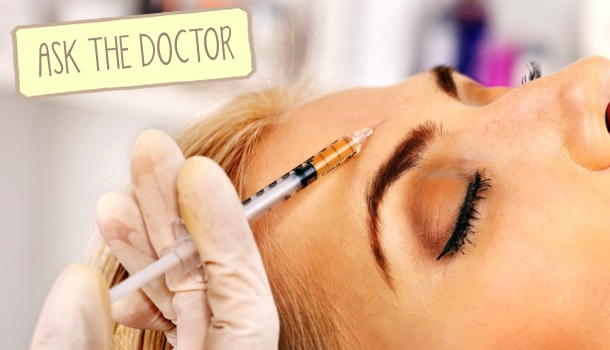
As women age, we’re all prone to getting wrinkles and crow’s feet, no matter how diligently we stick to our beauty maintenance routines. As these ageing effects take place, many women are apt to look for different types of procedures that can reduce wrinkles and lift sagging skin. Botox is a well-known injectable product that softens wrinkles and can even slim down wide faces. It’s one of the most popular aesthetic procedures worldwide, but is it for you?
The Basics of Botox
First, some technical background: Botox is actually a brand of botulinum toxin (BT), which is a neurotoxin produced by a bacteria and is responsible for botulism. In different countries, there are different forms and brands of botulinum toxin that are approved for human use. In Hong Kong, Botox is currently approved for on-label indications including the following:
- Blepharospasm – excessive blinking
- Strabismus – squinting, crossed eyes
- Cervical dystonia – spasmodic torticollis
- Spasticity due to cerebral palsy
- Upper limb spasticity associated with stroke
- Axillary hyperhidrosis – excessive underarm sweating
- Chronic migraine
- Bladder overactivity
- Glabellar lines aka frown lines
- Crow’s Feet or laugh lines at the outer corners of the eyes
- Forehead lines aka railroad tracks
The last three are cosmetic categories, and, if you’re reading this article, they’re probably the ones you’re most interested in! Botox is often used for facial slimming to achieve the coveted V-shaped facial contour that is very popular in Asia. When Botox is injected into the masseter muscle, it reduces the muscle’s size and narrows the facial contour. Other cosmetic conditions treated with Botox include gummy smiles, lip asymmetry, chin dimpling, jawline tightening (the ‘Nefertiti Lift’) and leg slimming. Botox can also be blended with hyaluronic acids and other compounds to improve skin’s texture, pigmentation and hydration. New methods and technologies using Botox are constantly improving.
As with all medications, there are warnings associated with the use of Botox. For one, it can spread to other parts of the body, which can lead to muscle weakness, swallowing difficulties, pneumonia, speech disorders and breathing problems. Botox is not recommended for anyone with hypersensitivity to any ingredient in the formulation of the product, patients with Myasthenia Gravis or Eaton Lambert Syndrome or patients with infection at injection sites. The duration of adverse reactions may last for several months or longer. Botox should also be avoided during pregnancy and breastfeeding.
Botox Treatment
With all the technical information out of the way, let’s talk about what you would expect when using Botox as a cosmetic facial treatment. Initially, you must consult with a medical doctor for the reasons stated above to rule out any related risks. After the initial consultation, you’ll have to review and sign a consent form summarising the relevant information. Photos may or may not be taken for reference (You can refuse photography if you wish.) Check the consent form regarding the confidentiality of the photos unless you want to be surprised with your before and after photos ending up on the side of a bus, in a magazine or all over the Internet!
Next, some practices will apply a numbing cream over the areas to be injected. Depending on the medication, the numbing effect starts in 10-25 minutes. Ice is also used as an alternative to the numbing cream; I prefer individual, disposable ice packs because of hygiene and cross-infection issues. There are nifty cooling devices available as well, but this varies from practice to practice.
Prior to injection, the skin must be sterilised. I like individually wrapped, disposable alcohol pads for this. Botox needles are usually small and each session usually involves multiple injections because Botox should be distributed to different areas. As with any injection, there may be localised pain, tenderness and/or bruising. After the injections, ice can be applied for pain relief and to minimise bleeding.
Recovery After Botox Injections
After your Botox treatment, you’re supposed to remain upright for at least four hours to minimise the migration of the Botox. Do not rub or massage the area. However, you can move the treated areas to help increase the response of the targeted muscles. The weakening effect of Botox will begin over the next 3-5 days and is completed over two weeks. During this time, there may be asymmetry or unevenness within the treated areas. Some patients may be less responsive or resistant to the effects of Botox, and in these cases, the effects and duration of the treatment may be less than expected.
As with all beauty treatments, do some research, ask your friends and consider if this is what you want. In Hong Kong, registered medical doctors are forbidden to advertise, so word of mouth is the most dependable source. Find a reputable physician who does this often and well. If you find a doctor whose Botox work appeals to you, I suggest keeping their contact information or getting on their private patient list.
See what the practice’s policy is for follow up and touch ups (in case of asymmetry or insufficient response). When starting off, remember that less is more! It’s smart to start off with smaller dosages because while you can always add more Botox later, you cannot remove BT once it has been injected. You need to wait until it gets out of your system after 4-6 months. While aesthetic medicine is not an exact science and results can’t be guaranteed, for some, Botox can be the solution for younger, firmer skin!
 View All
View All











 View All
View All





 View All
View All


 View All
View All














